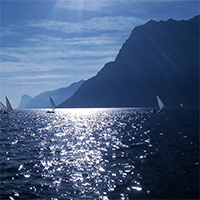Deep-mixing and deep-cooling events in Lake Garda: Simulation and mechanisms

Submitted: 1 March 2021
Accepted: 21 April 2021
Published: 21 June 2021
Accepted: 21 April 2021
Abstract Views: 1597
PDF: 707
Supplementary: 102
HTML: 70
Supplementary: 102
HTML: 70
Publisher's note
All claims expressed in this article are solely those of the authors and do not necessarily represent those of their affiliated organizations, or those of the publisher, the editors and the reviewers. Any product that may be evaluated in this article or claim that may be made by its manufacturer is not guaranteed or endorsed by the publisher.
All claims expressed in this article are solely those of the authors and do not necessarily represent those of their affiliated organizations, or those of the publisher, the editors and the reviewers. Any product that may be evaluated in this article or claim that may be made by its manufacturer is not guaranteed or endorsed by the publisher.
Similar Articles
- Cristian Scapozza, Nicola Patocchi, Lake Maggiore: geomorphological genesis, lake-level evolution, and present and future ecosystems importance , Journal of Limnology: Vol. 81 No. s2 (2022): Effects of water level management on lake littorals and downstream river areas
- Angela Boggero, Lyudmila Kamburska, Silvia Zaupa, Marzia Ciampittiello, Daniele Paganelli, Marco Cifoni, Michela Rogora, Tiziana Di Lorenzo, Sampling and laboratory protocols to study the effects of water-level management on the littoral invertebrate fauna in deep and large temperate lakes , Journal of Limnology: Vol. 81 No. s2 (2022): Effects of water level management on lake littorals and downstream river areas
- Camilla Capelli, Federica Mauri, Elisa Pianta, Federica Rotta, Fabio Lepori, Environmental DNA survey indicates arrival of quagga mussel in Ticino River basin , Journal of Limnology: Vol. 82 (2023)
- Ali Oveisy, Leon Boegman, One-dimensional simulation of lake and ice dynamics during winter , Journal of Limnology: Vol. 73 No. 3 (2014)
- Fasil Degefu, Michael Schagerl, Zooplankton abundance, species composition and ecology of tropical high-mountain crater lake Wonchi, Ethiopia , Journal of Limnology: Vol. 74 No. 2 (2015)
- Markus A. Hoffmann, Alberto Benavent González, Uta Raeder, Arnulf Melzer, Experimental weed control of Najas marina ssp. intermedia and Elodea nuttallii in lakes using biodegradable jute matting , Journal of Limnology: Vol. 72 No. 3 (2013)
- Fernando W. Bernal-Brooks, José J. Sánchez Chávez, Luis Bravo Inclán, Rubén Hernández Morales, Ana K. Martínez Cano, Owen T. Lind, Laura Dávalos-Lind, The algal growth-limiting nutrient of lakes located at Mexico’s Mesa Central , Journal of Limnology: Vol. 75 No. s1 (2016): Proceedings of the 6th National Congress of Limnology
- Jesús G. Rangel-Peraza, José de Anda, Fernando A. González-Farías, Michael Rode, Sensitivity and uncertainty analysis on water quality modelling of Aguamilpa reservoir , Journal of Limnology: Vol. 75 No. s1 (2016): Proceedings of the 6th National Congress of Limnology
- Cristiana Callieri, Emanuele Caravati, Gianluca Corno, Roberto Bertoni, Picocyanobacterial community structure and space-time dynamics in the subalpine Lake Maggiore (N. Italy) , Journal of Limnology: Vol. 71 No. 1 (2012)
- Angela Boggero, Elzbieta Dumnicka, Riccardo Fornaroli, Daniele Paganelli, Silvia Zaupa, Geotargeting spatial and temporal data of Italian freshwater high-altitude macroinvertebrates , Journal of Limnology: Vol. 82 No. s1 (2023): Georeferenced freshwater biodiversity data
<< < 10 11 12 13 14 15 16 17 18 19 > >>
You may also start an advanced similarity search for this article.

 https://doi.org/10.4081/jlimnol.2021.2010
https://doi.org/10.4081/jlimnol.2021.2010






